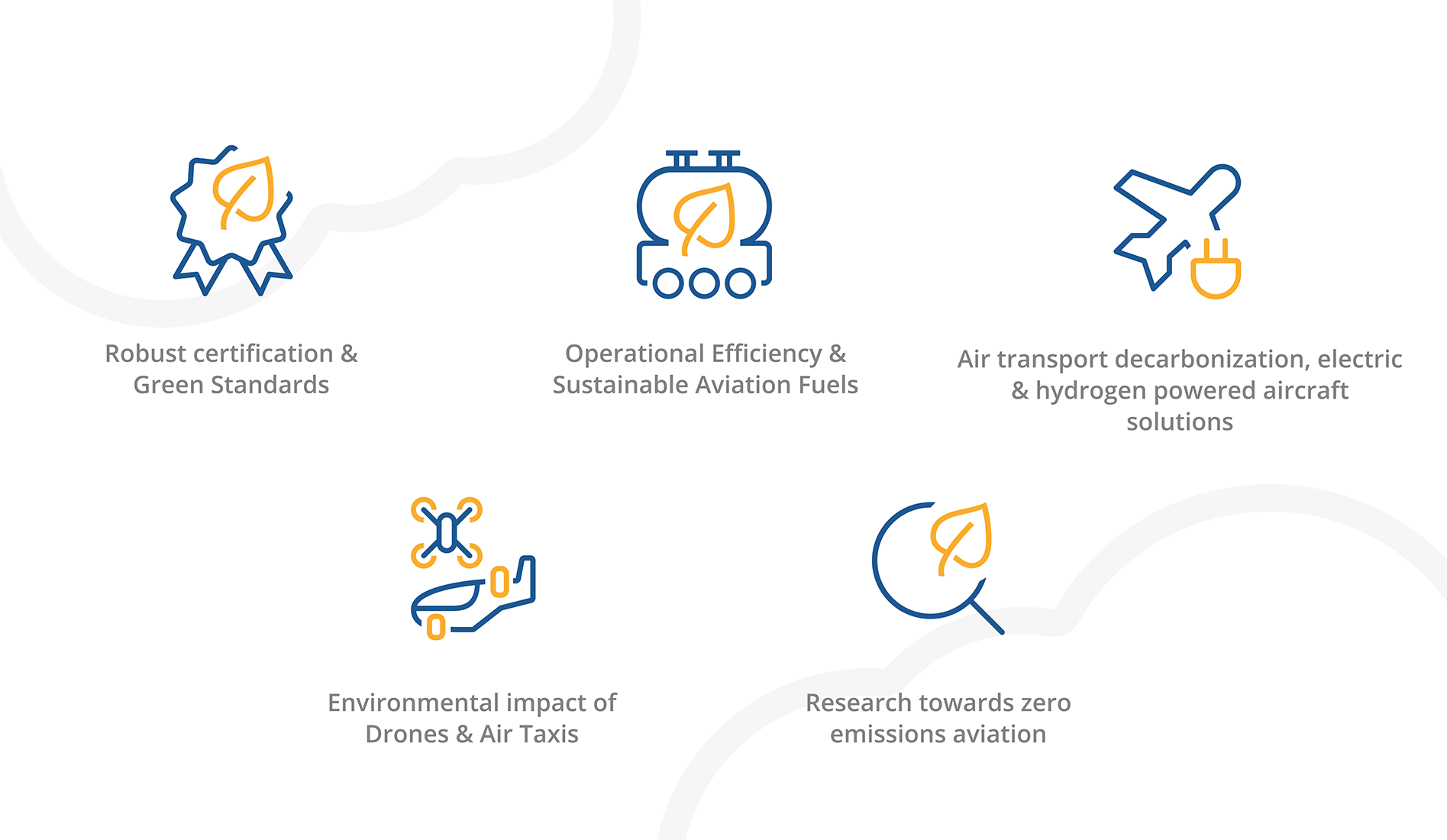Travel is more than transport. It ensures that people can play an active role in our multicultural and global society by visiting places, keeping in close contact with family and loved ones, appreciating different cultures and ecosystems.
At the same time, as we are already witnessing the consequences of climate change, the need to transform aviation in being more sustainable is clear and undisputed.
The European Union has initiated numerous projects and initiatives, with the aim to:
- Empower citizens to make informed and environmentally sustainable choices when travelling by air.
- Incentivise the aviation sector to continuously improve its environmental performance with a clear aim to decarbonise.
- Facilitate research and innovation which in turn supports the European aviation industry in becoming more competitive and at the same time more sustainable.
Take a look at the European Green Deal and the supporting initiatives for more details.
The Programme
In October 2020, the European Union Aviation Safety Agency (EASA), launched its Sustainable Aviation Programme in line with Environmental protection regulations (see (EU)2018/1139, Art. 87) in alignment to the European Green Deal.
The programme is implemented through an environmental strategy comprised of the following streams.

Empowering Passengers - EASA’s Environmental Label Programme
The aviation industry remains in the spotlight with respect to its environmental impacts. A 2020 survey of European travellers, caried out by EASA, found that the majority of respondents overestimated the share of emissions contributed by aviation. This supports the consumer use-case for credible, trusted environmental information regarding aviation’s environmental impacts.
Sustainable growth and ‘green recovery’ are central themes at national and international levels, and as we emerge from the COVID-19 pandemic, governments globally are emphasising the need to rebuild economies in a more sustainable way. This can be seen in the EU’s own recovery programme – NextGenerationEU – which aims to “make European economies and societies more sustainable, resilient and better prepared for the challenges and opportunities of the green and digital transitions” and most recently the package of measures under ‘Fit for 55’, which aims to reduce emissions by 55% by 2030. These policies are complimented with the Carbon Offsetting and Reduction Scheme for International Aviation (CORSIA), the EU Emissions Trading System (EU ETS), the introduction of ReFuelEU, and domestic policy initiatives.
To support the policies listed above and address the public’s focus on aviation emissions, EASA, as a trusted and independent regulator, has launched a programme for the development of environmental labels for aviation, with the aim of informing passengers of the environmental impact of their flight options and thus support more environmentally sustainable aviation. There are three labels in development: The so-called Flight Label, Airline Label, and Aircraft Label.
European citizens not only want to learn more about the effect their travel might have on the environment, they also want to be in a position to make a choice and therefore be empowered to make a difference.
EASA initiated a survey in 2019 with feedback received up until 2020. Responses from over 9,500 participants from 18 European Countries gave some clear pointers. The overarching response:
Passengers lack awareness but are keen to know more
Only 5% are aware how much CO2 they use when they travel by air
80% would like to get environmental information for flights they take
3 out of 4 would welcome an Environmental Label
Objective & Principles
EASA received a clear mandate from the European Commission and the European Parliament to set up the Environmental Label Programme with the following objective and principle:
The Objective:to reduce aviation’s environmental footprint by facilitating more sustainable choices based on trusted, harmonised, reliable and easily understandable information |
The Principles:
|
